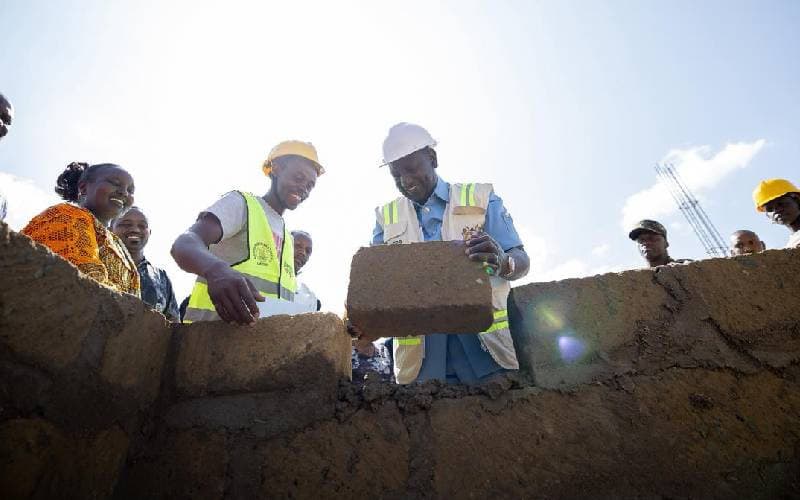Loading News Article...
We're loading the full news article for you. This includes the article content, images, author information, and related articles.
We're loading the full news article for you. This includes the article content, images, author information, and related articles.
Kenya's ambitious Affordable Housing Programme hinges on county government cooperation for land and planning, but navigating constitutional mandates and local consent remains a critical challenge for its success.

NAIROBI, Kenya – The success of Kenya's national Affordable Housing Programme (AHP) is intrinsically tied to the active and mandatory involvement of its 47 county governments, a partnership defined by constitutional mandates, new legislation, and the practical realities of land administration and local planning. While the national government drives policy and financing, the devolved units are the indispensable gatekeepers for the land and approvals needed to construct hundreds of thousands of homes.
Under the Fourth Schedule of the Constitution, the national government is tasked with formulating "housing policy," while county governments are responsible for "county planning and development," which explicitly includes housing. This division of functions establishes a framework of compulsory cooperation. The national government cannot unilaterally implement housing projects; it requires counties to identify and allocate land, a role that has become a cornerstone of the programme's execution model across the country.
The legal basis for this partnership was significantly solidified with the enactment of the Affordable Housing Act in March 2024. The Act provides a structured mechanism for intergovernmental collaboration, primarily through the establishment of County Rural and Urban Affordable Housing Committees in every county. These committees are tasked with creating frameworks for housing within the county, developing five-year investment plans, and advising the county governor, effectively localising the national agenda.
Crucially, the Act addresses the sensitive issue of land. It stipulates that any land held by a county government cannot be allocated for affordable housing projects without thorough public participation and engagement with the affected communities. This provision is designed to prevent disputes and ensure local buy-in, a critical lesson from early implementation challenges. Financially, the Act also provides for a portion of the national Affordable Housing Fund—not less than 0.5%—to be allocated to these county committees for administrative purposes, creating a direct financial linkage.
Across Kenya, the primary model of cooperation involves counties signing Memoranda of Understanding (MoU) with the National Housing Corporation (NHC), the state's main implementing agency. In these agreements, counties typically contribute land, while the NHC provides the financial and technical resources for construction. This model is being actively implemented in numerous counties, including Laikipia, which signed an MoU for 2,000 units, Baringo for 360 units, and Trans Nzoia, among others. Projects are in various stages of development in Kisumu, Vihiga, and Kiambu, demonstrating the nationwide scope of this collaborative approach.
On Tuesday, June 10, 2025, the Council of Governors (CoG), chaired by Wajir Governor Ahmed Abdullahi, publicly endorsed the programme and President William Ruto's directive to use the housing levy to fund ancillary infrastructure like markets, underscoring the political goodwill at the leadership level. Governor Abdullahi stated, “The success and the sustainability of the affordable housing program depends not only on the construction of the housing units but also on the provision of adequate physical and social infrastructure.”
Despite the legal framework and high-level agreements, the partnership is not without its complexities and potential for conflict. In February 2024, Attorney General Justin Muturi warned Parliament of potential clashes arising from the overlapping housing responsibilities between the two levels of government. He stressed the need for clear provisions on consultation and cooperation to avoid legal challenges that could derail the programme.
The National Land Commission (NLC) has also highlighted ambiguities concerning the ownership and transfer of properties built on county-donated land. NLC Chairperson Gershom Otachi raised questions about how counties would benefit long-term from contributing their primary asset—land—to nationally-funded projects.
Furthermore, implementation faces significant practical hurdles. In the Northern Frontier counties, for instance, projects have stalled due to the national government's failure to follow legal processes for acquiring community land, which requires extensive local consent and county-level planning approvals. Beyond land, counties and developers grapple with limited budget allocations for supportive infrastructure, high construction costs, and challenges in securing affordable financing for potential homeowners.
For Kenya's housing dream to be realised, the symbiotic relationship between the national and county governments must be carefully managed. While the Affordable Housing Act of 2024 provides a clear roadmap, its successful implementation will depend on consistent political cooperation, respect for devolved functions, and a transparent process that ensures benefits are shared equitably between both levels of government and, ultimately, the Kenyan citizens they serve.